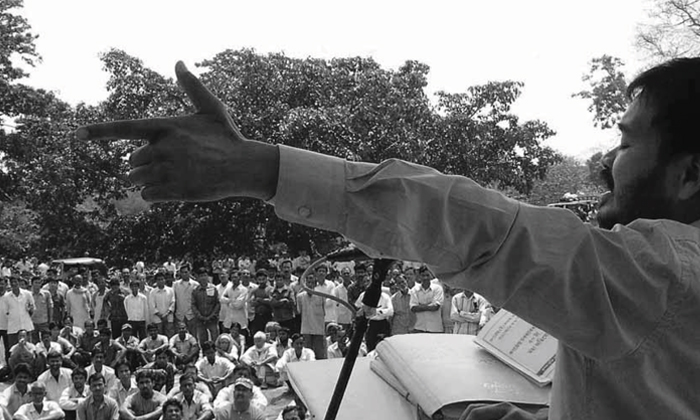Heated debates on television and public forums, agitations, motorcycle rallies, road blockades – these are some of the ways in which dissent over the construction of the mega dam project in Lower Subansiri in Assam-Arunachal Pradesh border has gained momentum. The Krishak Mukti Sangram Samiti (KMSS) and All Assam Students’ Union (AASU) resumed their anti-mega dam campaign after the Assam government decided to push ahead with the barges carrying turbines for the construction of the hydel project at Lower Subansiri.
“Activists feel that these problems arise as there are no independent experts or social scientists in the committees that undertake the study of a proposed dam.”
In a bid to prevent these barges from reaching its destination, these two influential pressure groups blocked national highways at various places in the state as well as the waterways to barricade the barges. Due to the ongoing agitations, the five cargo ferries of Assam-Bengal Courier India Ltd, carrying turbines for the National Hydroelectric Power Corporation Ltd (NHPC)’s mega dam project have been stranded for more than a year now at Dhubri port of Assam. A segment of the Rs 6,400-crore project falls in Assam and the rest in Arunachal Pradesh. The MoU with Arunachal Pradesh government has been signed; following which construction on that side of the border is presently under way.
The Subansari Lower Dam is a 2,000 mega watt under construction hydroelectric power project of NHPC limited. The project is located in Gerukamukh, near North Lakhimpur, on the border of Assam and Arunachal Pradesh. It is scheduled to be completed by approx 2012. Arunachal Pradesh has signed 168 memoranda of understanding with private and public companies to develop hydropower but activists feel this will have a disastrous impact on Assam and thus a cumulative downstream impact study was necessary.
The civil society and common people in the state apprehend that the project undertaken by the NHPC will be hazardous to downstream areas in Assam as well as to the rich ecology and biodiversity of the areas around it. Anti-dam activists have demanded immediate halt of the project.
Earlier, AASU had organised a workshop where dam experts of the state spoke on various aspects of the Lower Subansiri project and its feasibility. An eight-member expert committee, comprising scholars from Gauhati University, Dibrugarh University and IIT Guwahati, had recommended an exhaustive review and redesign of the 115-metre high dam. However, the NHPC clarified that with just two years left for commissioning of the first three units of the 2000MW project, it is not possible to make any structural changes to the dam. Three units of the Subansiri project are scheduled to be commissioned by March 2012 while the rest will be commissioned by the end of that year. The dam height has been reduced from 275 metres to 115 metres. Further reduction in height has been ruled out.
Activists feel that these problems arise as there are no independent experts or social scientists in the committees that undertake the study of a proposed dam. “Only engineers and technocrats cannot determine all aspects of the impact of dams on the life and livelihood of the people living in the downstream areas,” rues Akhil Gogoi, general secretary of the KMSS. They fear that once these projects are completed, there would be flash floods in the downstream areas due to sudden and excessive discharge of water from the dam after a heavy shower.
Besides, there are apprehensions that these projects would have adverse impact on the erosion situation, bio-diversity and ecology of the region. The North East Student Organisation (NESO) has initiated a series of agitations since 2001, warning that if the dam is to be constructed, it will spell disaster for the people of Assam. Activists feel that most of the time Environmental Impact Assessment (EIA) is done to favour the company and public hearings are bulldozed by the companies.
A dossier on “Large Dams for Hydropower in Northeast India” by Kalpavriksh Environment Action Group states, “The Subansiri is an extremely flashy river (great variation in minimum and maximum flows and prone to sudden increased water flows due to intense precipitation in a very short time). We see growing incidences of ‘dam-induced floods’ across the country (eg.Orissa), where after sudden and intense rainfall upstream, the waters of the dam are released to protect the dam structure and this causes great havoc downstream. Such risks are heightened in such areas in the Eastern Himalayas which receive high intense rainfall.”
Moreover, the dam site is also an ecological hotspot. Wildlife biologist Firoz Ahmed says, “A dam kills the river and its ecosystem over a period of time putting at risk all floras, fauna as well as human beings. Subansiri being on a very important river system in the Brahmaputra valley, is an intrinsic part of the local culture. Wildlife species like the River dolphins, elephants and tigers will be affected.”
Moreover, the fish diversity and population will get drastically altered because of the flow regime. “Flow regime is a situation when a river flow is controlled by a dam and the flow is artificially induced. There will be a high demand for electricity in the evening hours and they will run the turbines. We need to visualize the fluctuation of water flow in a 24 hour regime,” adds Ahmed.
Chances are thin that the authorities will heed to the voices of the people and take steps for protection of the rivers, which are the lifelines of the region. It is also unlikely that the government will instead focus on construction of micro-dams to generate energy.


